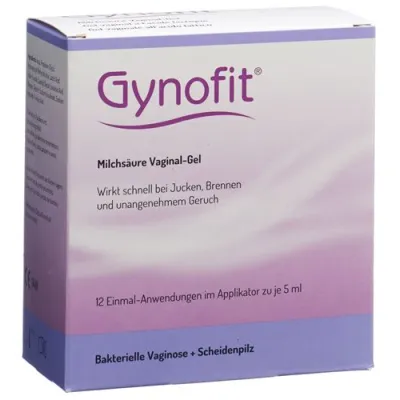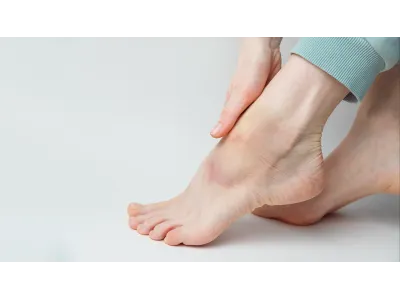Fighting Discomfort and Infections: Restoring Healthy Vaginal Flora with Natural Probiotics

Vaginal flora refers to the complex ecosystem of microorganisms, including bacteria and yeast, that inhabit the vagina. This microbiome supports vaginal health and prevents infections by creating an environment that harbors harmful pathogens. Therefore, it is important to understand your body and do everything possible to support the health of the vagina.
Vaginal Flora Health
Healthy vaginal flora consists of lactobacilli, bacteria that produce lactic acid and hydrogen peroxide. This product maintains a slightly acidic pH in the vagina, which is important for inhibiting the growth of harmful bacteria and yeast. When the balance of the vaginal microbiome is disturbed, it leads to infections such as bacterial vaginosis or yeast infections, which are characterized by symptoms such as itching, discharge and discomfort.
Healthy vaginal flora consists of lactobacilli, bacteria that produce lactic acid and hydrogen peroxide. This product maintains a slightly acidic pH in the vagina, which is important for inhibiting the growth of harmful bacteria and yeast. When the balance of the vaginal microbiome is disturbed, it leads to infections such as bacterial vaginosis or yeast infections, which are characterized by symptoms such as itching, discharge and discomfort.
Bacterial vaginosis: condition characterized by the overgrowth of certain bacteria in the vagina, which leads to an imbalance of the vaginal microbiome. The most common symptom of BV is an unusual vaginal discharge that is often described as thin, gray, or white, and has a fishy odor that becomes more pronounced after intercourse. Some women also experience itching, burning, or discomfort, but BV often has no symptoms.
Yeast infections: also known as candidiasis, occur when there is an overgrowth of the fungus Candida albicans in the vagina. This yeast is usually present in small amounts in the vagina, but certain conditions cause it to overgrow, leading to symptoms. The most common symptom of a yeast infection is severe itching along with a thick, white, cheese-like vaginal discharge. Other symptoms include redness, swelling, and irritation of the vagina and vulva.
Healthy vaginal flora can be maintained in several ways:
- Proper hygiene: Gentle cleansing of the vulva with water or a mild, unscented soap facilitates maintaining the natural balance of the vaginal microbiome. It is vital to avoid douching, as this disturbs the pH balance and leads to infections.
- A healthy diet: A balanced diet wealthy in prebiotics and probiotics helps the health of the microbiome, including the vaginal microbiome. Foods which include yogurt and fermented foods contain useful bacteria that promote vaginal health.
- Clothing choices: Wearing breathable cotton underwear and avoiding too tight reduces the accumulation of moisture around the vagina, reducing the threat of yeast infections.
- Sexual health practices: Using protection for the duration of intercourse prevents the transmission of infections which can disrupt the vaginal flora. In addition, right lubrication for the duration of intercourse minimizes physical irritation.
- Avoid needless antibiotics: Antibiotics kill good microorganisms inside the vagina, disrupting the stability of the microbiome. It is crucial to apply antibiotics only when necessary and as prescribed with the aid of a physician.
If burning, itching and an ugly scent seem after taking antibiotics, it's crucial to repair the vaginal microbiome with the assistance of lactic acid bacteria. The composition of this product includes Gynophilus restore - vaginal capsules for the restoration of vaginal flora with lactic acid bacteria. An imbalance in the vaginal flora causes itching, unpleasant odor, abnormal secretions, burning, discomfort and irritation of the pelvic floor. Thanks to its natural components, such as the bacterium Lactobacillus casei rhamnosus Doderlein, the gynophilus capsule helps lower the pH value, which supports and restores healthy vaginal flora.
Use of Gynophilus caps: 2 intravaginal capsules per day for 7 days or one intravaginal capsule per day for 14 days to support vaginal flora.
In addition, regular examinations by a doctor help to identify and eliminate any imbalance in the vaginal flora at an early stage, preventing more serious complications.
Factors Disrupting the Vaginal Microbiome
Vaginal flora, consisting of various strains of beneficial bacteria, supports a weakly acidic environment that is unfavorable for harmful pathogens. However, some factors disrupt this delicate balance, leading to an overgrowth of harmful bacteria or yeast and leading to infections such as bacterial vaginosis or yeast infections. The main destroyers of the vaginal microbiome:
- Hormonal changes: Hormonal fluctuations during a woman's life, such as during puberty, menstruation, pregnancy and menopause, affect the composition of the vaginal flora. For example, the drop in estrogen during menopause reduces the number of lactobacilli, a type of bacteria that produces lactic acid, resulting in a more alkaline vaginal pH. Also, women may experience burning and dryness, in which case a product based on hyaluronic acid, such as Gynofit Lactic Acid Vaginal Gel, should be used. The gel helps to maintain the moisture and health of the vagina. Contains hyaluronic acid, which helps moisturize the vaginal mucosa, and calendula extract, which has anti-inflammatory and soothing properties.
Gynofit lactic acid vaginal gel 12 x 5 ml
Gynofit Lactic Acid Vaginal Gel is a vaginal care product developed with gynecologists to support vaginal infections and preventative care of the intimate area.At a glancesupports the restoration of the optimal pH value in the intimate areasuitable for the treatment and prevention of vaginal infectionsdeveloped in collaboration with gynecologistsbrings the vaginal flora back into balance in a natural way and perfume free, therefore particularly well toleratedpractical hygiene applicator for safe and clean applicationDescriptionGynofit lactic acid vaginal gel is an effective product to help your body restore the optimal pH value in the intimate area. Achieving this balance can reduce the risk of vaginal infections. The gel was developed in close collaboration with gynecologists to quickly restore the vaginal flora to a healthy, stable balance in a natural way. It is suitable for treating various vaginal infections, but can also be used preventively. Gynofit lactic acid vaginal gel can also be used to accompany antibiotic therapy. It contains no s or perfume and is therefore particularly well tolerated. The practical hygiene applicator allows the gel to be applied safely and cleanly to the vaginal epithelium, where it adheres securely.EffectRestores the optimal pH value in the intimate area and supports the vaginal flora.ApplicationThe most effective way to apply the gel is to lie down in the evening before going to bed. An improvement in symptoms should be noticeable within four to six hours. The high-quality lactic acid it contains also helps to promote the necessary acidic environment and thus bring the vaginal flora back into balance.Composition / Active ingredienteslactic acid, propylene glycol, hypromellose..
52,81 USD
- Sexual activity: Sexual activity can introduce new bacteria and other microorganisms into the vaginal environment, potentially disrupting the natural balance of the microbiome. The use of certain lubricants, spermicides or condoms also affects the vaginal flora.
- Douching: Douching disrupts the natural balance of bacteria in the vagina, so health professionals strongly discourage its use. It washes away beneficial bacteria, making the vagina more susceptible to infections.
- Poor hygiene: Poor or excessive hygiene can harm the vaginal microbiome. For example, excessive washing, especially with aggressive soaps or shower gels, disturbs the natural balance of the vagina, and insufficient hygiene can lead to the accumulation of harmful bacteria.
Probiotics for Vaginal Health
Probiotics, often referred to as “good” or “friendly” bacteria, support not only the health and balance of the vaginal microbiome, but also vaginal pH and a healthy environment that resists infection.
Rebalancing
Vaginal flora mainly consists of Lactobacillus species, which produce lactic acid and help maintain an acidic environment in the vagina. This acidity is necessary to suppress the growth of harmful bacteria and yeast. When the balance of the vaginal microbiome is disrupted by antibiotics, hormonal changes, or other factors, it leads to bacterial vaginosis (BV) and yeast infections.
Probiotics help restore the natural balance of the microbiome, restore the population of beneficial bacteria in the vagina. This is especially helpful after being treated with antibiotics, which kill the good bacteria along with the bad, resulting in an imbalance.
Sources of probiotics
In addition to supplements, probiotics can be found in fermented foods such as yogurt, kefir, sauerkraut, and kimchi. Consuming these foods can introduce beneficial bacteria into the gut, which can indirectly benefit vaginal health through the gastrointestinal tract. This connection suggests that a healthy gut microbiome can influence the health of the vaginal microbiome.
Choosing the right probiotics
When deciding on probiotic supplements for vaginal health, it's far crucial to select products that include a particular list of Lactobacillus strains, inclusive of Lactobacillus rhamnosus GR-1 and Lactobacillus reuteri RC-14, which have been clinically studied to advantage vaginal health. By the way, gynophilus contains Lactobacillus rhamnosus in its composition.
Disclaimer: The article contains information about restoring healthful vaginal flora with the help of natural probiotics and should not be taken into consideration as a medical recommendation. It is important to seek advice from a healthcare expert before beginning to apply probiotics.
M. Stähli











